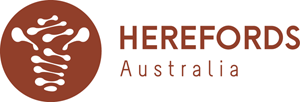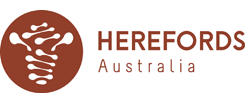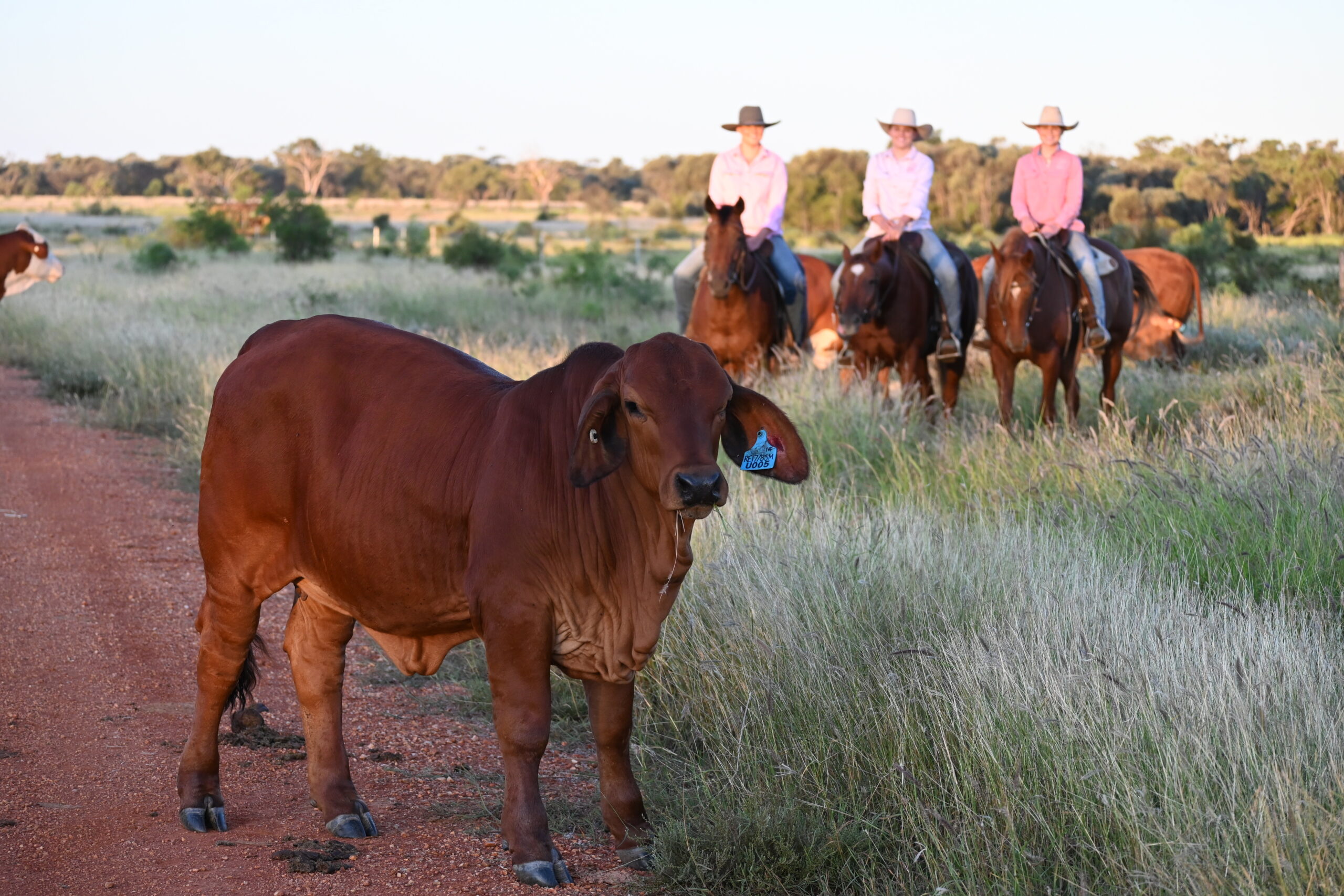Central Queensland cattle producer Alice Marks freely admits her family like a good-looking bull with tropical skin, red ‘goggles’ around the eyes and a clean polled head, but she says sire selection is about more than just a pretty face.
Alice, husband Darren and eldest daughters Olivia and Natalie run Winvic Pastoral in the Kilcummin district near Clermont, joining 1000 commercial females annually on a Braford base and crossing Poll Hereford and Brahman genetics back in.
Key to their operation is the use of Tropical Composite BREEDPLAN to evaluate and compare sires and dams for docility, fertility, growth and carcase traits, such as intramuscular fat (IMF) and eye muscle area (EMA).
The herd is run across four properties of different land types totalling 10,074ha, with the majority of sale cattle finished on grass, 885ha of leucaena and forage crops, and turned off as Jap ox weight for age bullocks to JBS Rockhampton and Dinmore or as cull heifers to Teys Grasslands program.
Alice Marks says they started using Poll Hereford Bulls 12 years ago, when the decision was made to establish a 100% polled herd.
“We started buying Hereford bulls and they came with BREEDPLAN figures. Initially we only required bulls to be big docile polls with big red goggles and good eye setting but our selection process has since evolved to utilise bulls with high ranking EBVs generated through BREEDPLAN,” Alice said.
“We didn’t want to lose sight of weight, and Hereford breeders have done very well to keep the growth in their poll sires. Now that we’re able to genotype, it makes selection for polledness much faster. We only purchase and retain homozygous poll bulls.”
The number one benefit that emerged from the Hereford input was the quietness and docility evident from the very first calf drop.
“That quiet temperament keeps compounding and the other big bonus we found is Herefords are very hard to beat for grass conversion, which results in turnoff at a younger age,” Alice said.
“There’s also a lot of longevity in Hereford bulls which makes them very good value for money, especially with the information that’s provided in terms of EBVs and genomics.
“You could keep a Hereford bull in your herd until they’re 10-years-old if you wanted to, they’re built tough and have the lowest breakdown rate in our herd.”
The Marks are refining their crossbreeding system each year, continuously adapting the herd’s genetic makeup to meet the environmental conditions the cattle are raised in. The herd ranges from 7/8 Brahman to 7/8 Hereford and everything in between.
While every attempt is made to keep progeny as flat-backed as possible for the market they supply, Alice says tick resistance and heat tolerance requires a level of Bos Indicus blood, especially in the breeding females. They also look for Hereford coats that slick down in summer.
“We use BREEDPLAN to help select Brahman genetics based on growth and docility with the trait of negative days to calving weighted heavily, then we cross the progeny back to Poll Herefords with leading carcase and fertility traits that will complement the Bos Indicus genetics,” she said.
“We think it’s also important to get out and visit the stud herds and get to know the cattle. We’ve identified a line of big, growthy Brahman bulls that are incredibly docile, and when you concentrate on docility the rest tends to follow.
“The Hereford, already inherently quiet, adds intramuscular fat, grass-doing ability and ensures high fertility.
“Tropical Composite BREEDPLAN allows us to measure our crossbred cattle against each other and we now introduce new seedstock through artificial breeding by identifying our best-performing females using EBVs, GBVs and phenotypes.
“We use them in an IVF program as donor females and cross back to Hereford and Brahman bulls. When you get a donor that collects really well, we have the ability to split her eggs two ways e.g. to a Hereford bull and Brahman bull, and measure the progeny.”
The Marks scan heifers and bulls as yearlings and those females with high EMA, WFA and IMF, and those that are phenotypically correct go into the donor program.
“A lot of people say IMF isn’t heritable but we’ve found it is. Once you start measuring traits you see patterns in sire lines and it can be pretty consistent if you are selecting for it over a long time,” Alice said.
“It’s great when you find some outliers though. We have two Braford donor heifers selected for their fertility on the dam and grand dam’s side, and their sire is a Braford bull with very little IMF but great muscle.
“Both heifers were nearly 8% on IMF and one had the second highest EMA of the cohort, so she was a true outlier. They’ve gone back to US Hereford bulls with 10 calves to drop in September, so we hope that cross will stabilise IMF in their progeny and create something quite special for us,” she said.
While genetics is critical, the end game for the Marks is the MSA carcase, and breeding ‘delicious’ beef from productive, efficient cattle.
At the Clermont Beef Expo 2022, Winvic Pastoral exhibited the Champion Pen of Grass/Crop Fed Trade Steers. Their two pens of Hereford cross Braford steers, 18-22 months old, averaged 636kg and returned $2634/head.
“We’ve gone from having no idea of the marble score of our cattle to a focus on eating quality with the aim of pushing our 2 and 3 marble scores up to 5, which would be great,” said Alice.
“We had a Hereford cross heifer marble score 5 the other day, but we don’t want to take our eye off carcase weight either. It has to be a balanced approach.”
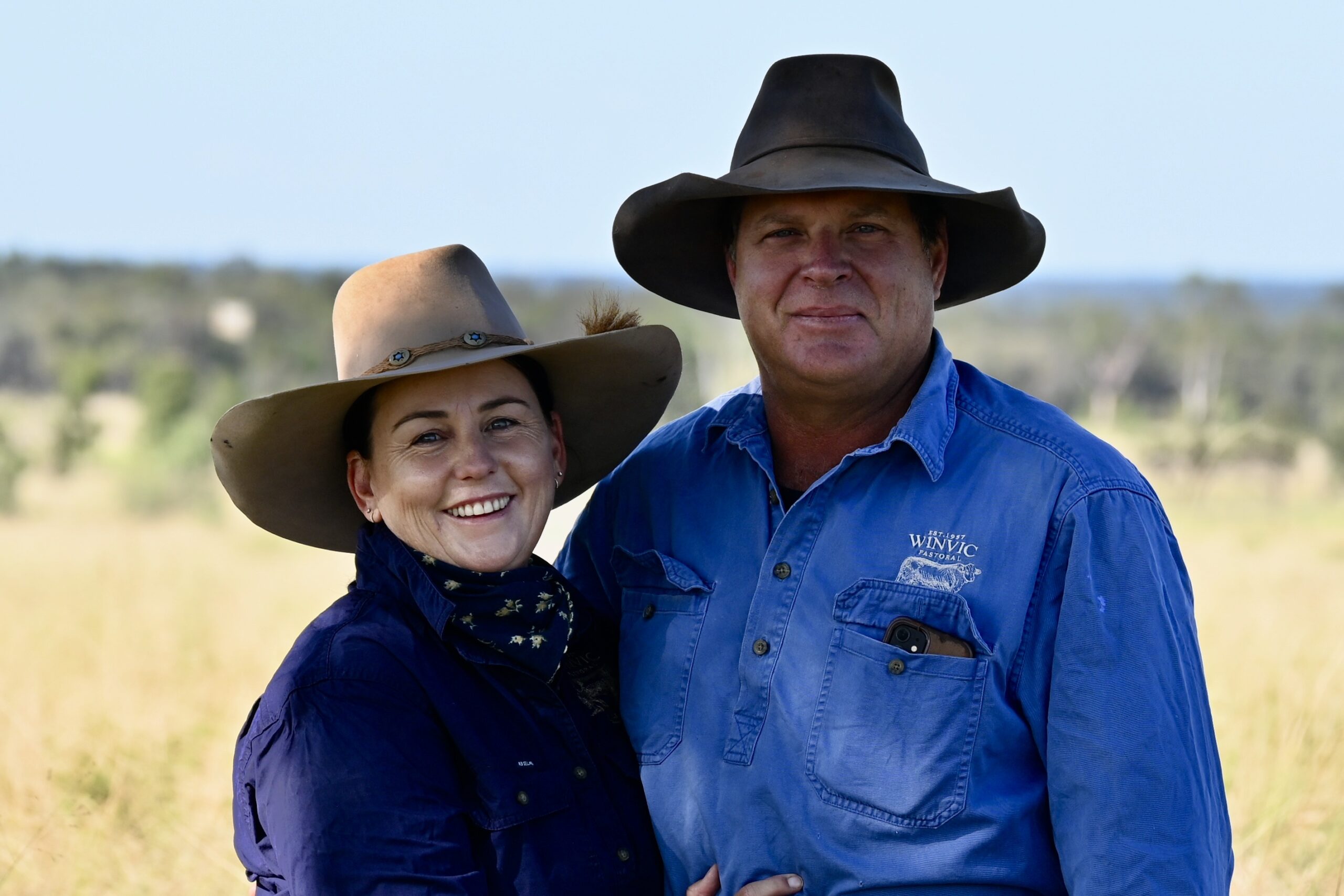
Central Queensland producers Alice and Darren Marks of ‘Winvic’, Clermont use Tropical Composite BREEDPLAN to produce highly adaptable, productive and docile cattle using Hereford, Braford and Brahman genetics.
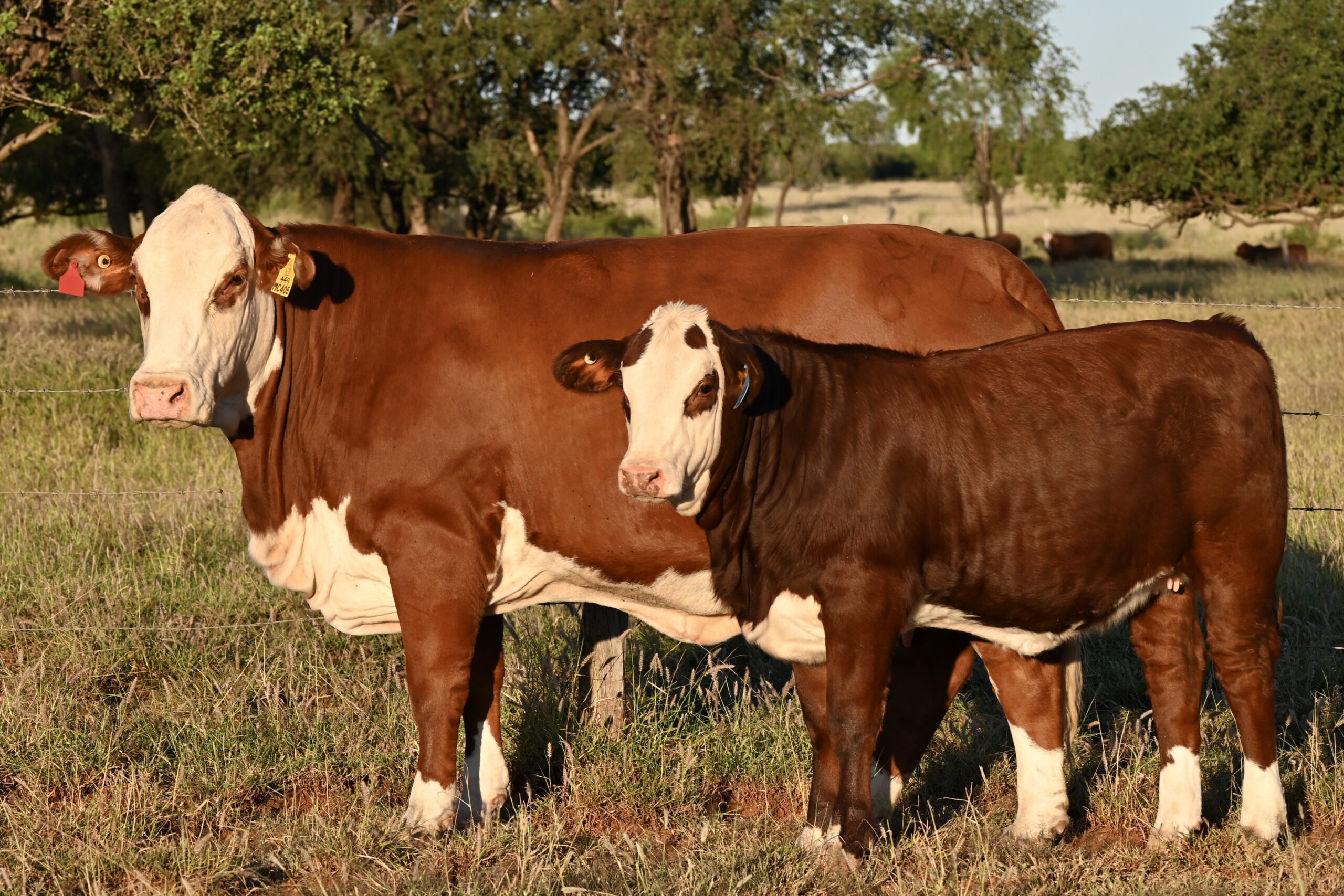
Winvic 449, a tropical-skinned Hereford cross Braford cow with calf by US Poll Hereford sire, Churchill Red Baron 8300F. Sired by an Australian Hereford bull, she has nine IVF calves dropping in September to two US Poll Hereford sires.
